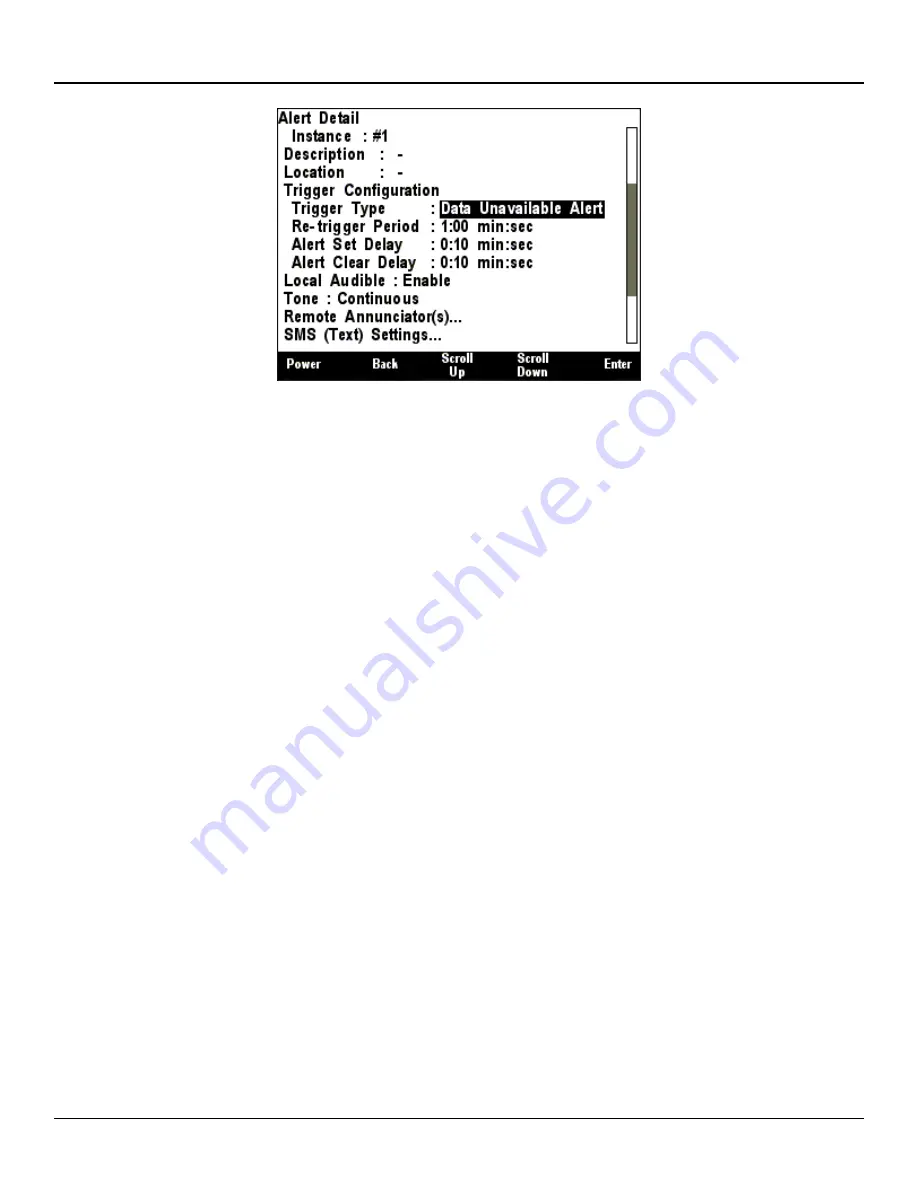
DSM410
User’s Manual
Page 242
Revision 1.7.2
Figure 285
– Trigger Configuration – Data Unavailable Alert
Re-trigger Period
– When you accept an alert, it will change to the “Accepted” state, and
annunciators that are sounding for that alert will stop sounding. If the condition which caused
the alert remains true after the amount of time in this field, the alert will return to
the “Active”
state, and annunciators will begin sounding again for that alert. If a value of 0:00 is entered,
then the alert will never re-trigger.
Alert Set Delay
– If a valid value for the parameter being monitored is continually not received or
has an invalid value for the amount of time specified in this field, the alert will become active.
Alert Clear Delay
– The parameter being monitored must continually be received with a valid
value for longer than the time in this field in order for the alert to become inactive.
8.3.7.4 Trigger Type is On Alert
As opposed to high and low alerts that are associated with analog input signals (i.e., many different
possible input values), there are also switch alerts that are associated with a binary input value
(sometimes called on or off, yes or no, enabled or disabled, set or reset, active or inactive). The
switch alert is similar to the high and low alert except that there are no set or reset points. The mere
fact that the switch is seen as On causes the alert to become an active alert (assuming the Set Delay
is set to zero). Likewise, if the switch being monitored is seen as false (i.e., binary 0), then the alert
becomes inactive (assuming the Clear Delay is set to zero). If the delays are not programmed to zero,
then the switch must remain On for the Set Delay before the alert becomes active, and must remain
Off for the Clear Delay before the alert becomes inactive.
















































